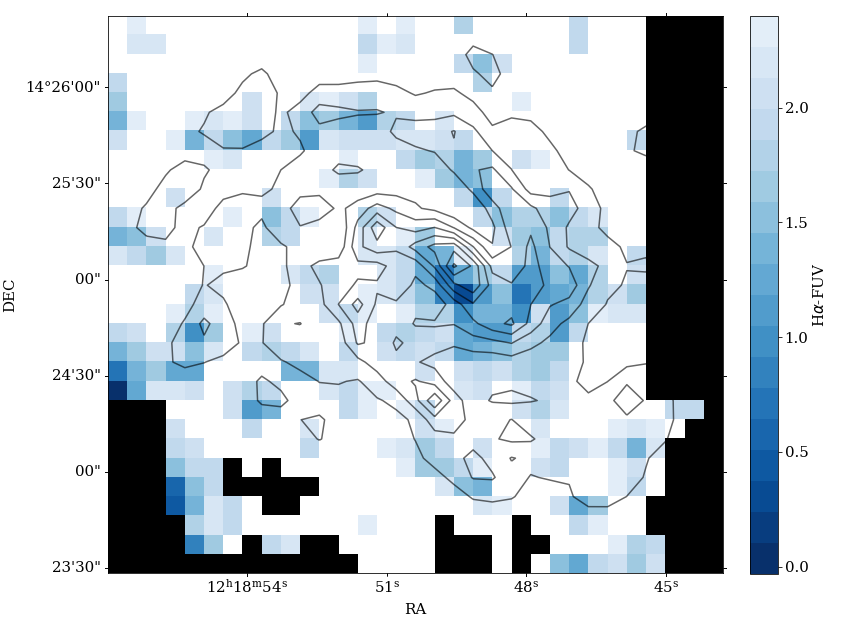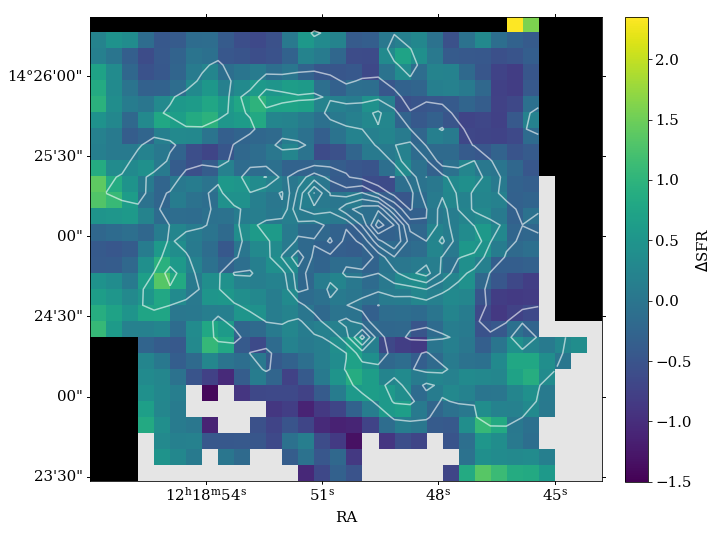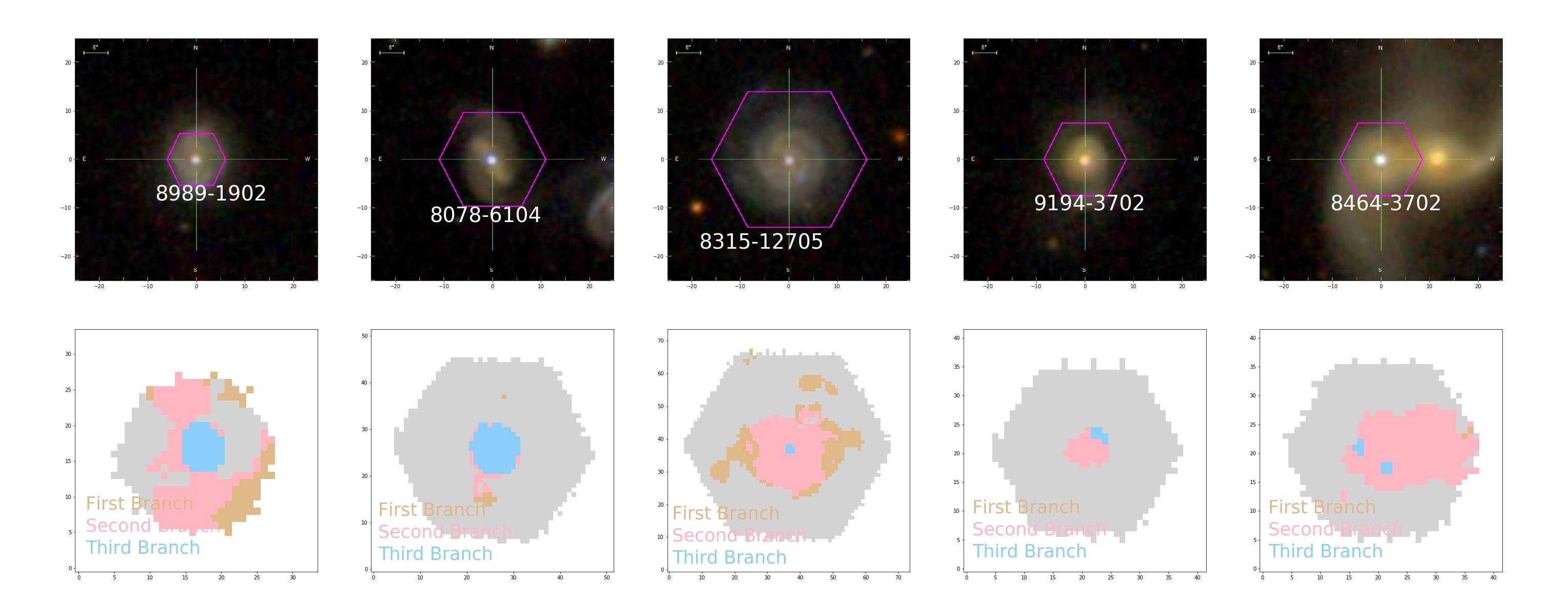Mapping the Star Formation Rate Change in NGC4254
Advisor: Prof. Amelie Saintonge (University College London) & Prof Ilse De Looze (Ghent University)
Star formation is crucial in understanding galaxy evolution. Using MUSE spatially resolved spectroscopy and multiwavelength photometry, we derive the spatially resolved change of star formation in NGC4254 by Hα-FUV colour and SED modelling at a resolution of ~ 6’’(~ 480pc). We reveal a lopsided enhanced star formation burstiness in the northwestern spiral arm of NGC4254, while it is the southeastern spiral arm that is more prominent in multiwavelength.

We study the change in Star Formation Rate with respect to the three scaling relations between each pair in stellar mass surface density (Σ*), molecular gas mass surface density (Σgas) and Star Formation Rate (SFR) surface density (ΣSFR). Comparing with the CO(2-1) observation from ALMA, we highlight the correlation between the molecular gas component and deviation in SFR (ΔSFR) from the resolved Star Forming Main Sequence (Σ* - ΣSFR).

Our results indicate that the gravitational interactions between galaxies and the cluster environment can have an progressive impact on star formation in different regions on different time scales, and that the burst or quenching in NGC4254 may be motivated by the fraction of the molecular gas component.
Exploring Transitional Galaxies Indicated by [NII]/[SII] ratios
Advisor: Prof. Lei Hao (Shanghai Astronomical Observatory, Chinese Academy of Sciences) & Prof. Taotao Fang (Xiamen University)
Previous works on FUV-luminous galaxies have found unusually high-[NII]/[SII]-ratio galaxies also show compact nature, strong outflows, and vigorous star formations (Overzier et al., 2009). Such galaxies also exhibit particular MIR spectral features, including the crystallized silicate features (Xie et al., 2014, 2015, 2016). These characteristics indicate that these galaxies may exist in a transitional stage where galaxy mergers have induced intensive nuclear starbursts, as suggested from numerical simulations (Hopkins et al., 2008).
We have undertaken an extensive study of the [NII]/[SII] properties in the SDSS MaNGA (Mapping Nearby Galaxies at Apache Point Observatory). We adopt the criteria of log([NII]/[SII]) > 0.5 and log([OIII]/[Hβ]) < 0.2 (to rule out possible AGN contaminations) and limit ourselves with galaxies that have S/N > 10. We found five galaxies with at least five spaxels that show high-[NII]/[SII] ratios, three of which also show deep NaID doublet absorption feature, which probes neutral gas outflows.

We also proposed to probe the HI gas contents of 5 galaxies with high [NII]/[SII] ratios and 11 with moderate[NII]/[SII] ratios through FAST(Five-hundred-meter Aperture Spherical radio Telescope) to detect the HI gas contents in these galaxies and correlate with their galactic properties and star formation activities combined with MaNGA data.
